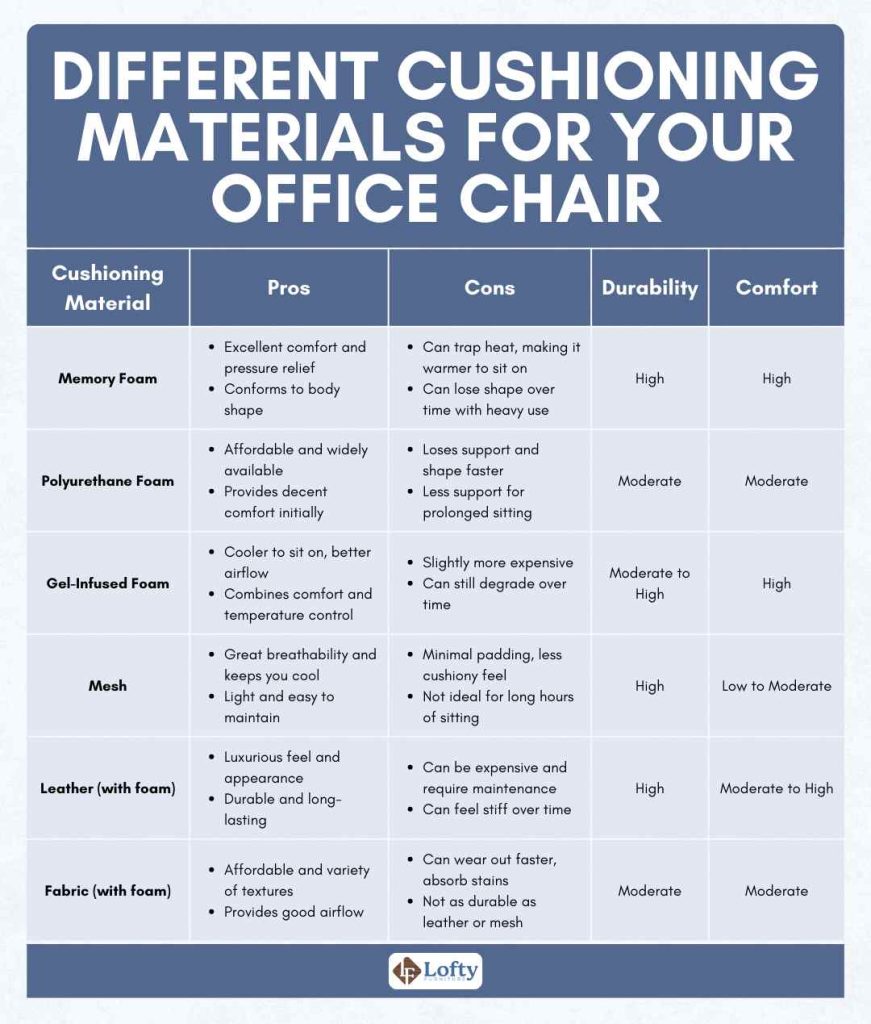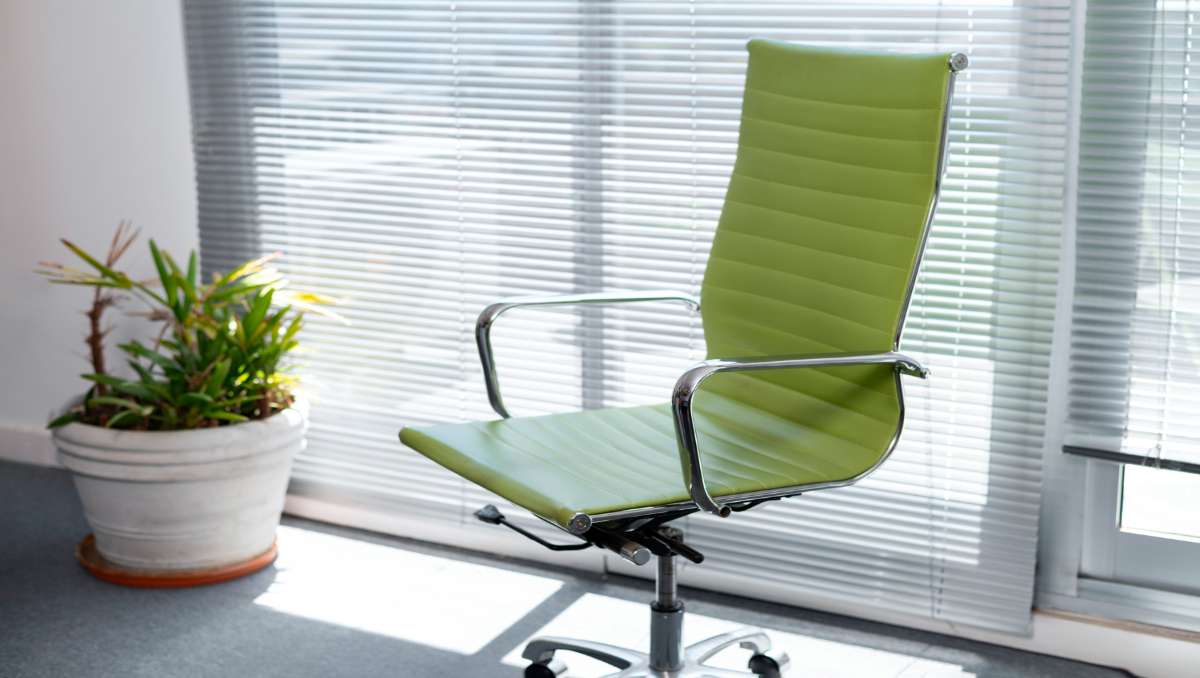Finding the right office chair height is crucial for comfort, productivity, and overall health. Unfortunately, many people struggle with chairs that are either too high or too low, leading to issues like back pain, poor posture, and decreased work efficiency. Whether you’re experiencing discomfort due to a poorly adjusted chair or simply want to optimize your workspace, understanding the common height-related problems and knowing how to fix them can make a world of difference.
Key Takeaways
- Proper office chair height is essential for maintaining ergonomic posture, comfort, and overall physical well-being.
- Frequent issues include chairs that are too high or too low, non-adjustable chairs, inadequate lumbar support, and poor cushioning.
- Solutions to height-related issues range from using footrests and seat cushions to investing in adjustable chairs and height-adjustable desks.
This article explores the most frequent office chair height problems and provides practical solutions to help you sit comfortably and work efficiently.
Why Office Chair Height and Ergonomics Matter
The height of your office chair plays a role in maintaining ergonomic posture and overall comfort. When your chair is adjusted to the correct height, this ensures that your body weight is evenly distributed, reducing strain on your back, hips, and legs. Beyond chair height, other ergonomic factors—such as lumbar support, seat cushioning, and seat depth—significantly influence comfort and physical well-being. Sitting too low can cause you to hunch forward, leading to back and neck pain, while sitting too high can strain your legs and feet, causing discomfort and circulation issues.
Here’s a table showing the recommended office chair height based on a person’s height range:

Common Office Chair Height Problems
Below, we’ll break down the most common chair height-related problems, starting with chairs that are too high.
#1 Chair Too High
When your office chair is too high, it often causes your legs to dangle above the ground. This puts significant pressure on the backs of your thighs. A study found that prolonged periods of sitting with improper leg positioning can lead to restricted blood flow, increasing the risk of DVT—a condition where blood clots form in the legs due to poor circulation.
Solution: One of the easiest fixes for a chair that’s too high is to use a footrest. A footrest can help maintain proper posture, reduce pressure on your thighs, and improve circulation. You can also adjust the chair’s height lever or invest in an ergonomic chair with height adjustment.
#2 Chair Too Low
The unnatural posture caused by a low chair can increase pressure on the lumbar region, leading to chronic lower back pain, a condition that affects many office workers. A study found that sitting with improper posture, such as having the hips lower than the knees, is a major contributor to lower back pain.
Solution: Raise the seat until your hips are slightly higher than your knees and your feet rest flat on the floor. If your chair doesn’t raise high enough, consider using a seat cushion to elevate your seating position.

#3 Non-Adjustable Chairs
Non-adjustable chairs create significant bad ergonomics, as they don’t allow users to customize key features like height, lumbar support, or armrests. This lack of flexibility can lead to improper posture, body misalignment, and discomfort. Over time, these issues may cause chronic pain, particularly in the lower back and shoulders.
Solution: You can add a seat cushion for height, use a lumbar support cushion to maintain spine alignment, and employ a footrest if your feet don’t reach the ground. In some cases, external armrests or wrist supports can also help reduce strain on the neck and shoulders.
#4 Inadequate Lumbar Support

A lack of proper lumbar support often leads to slouching and difficulty maintaining an upright posture. When the natural curve of the spine isn’t supported, it forces your lower back into an unnatural position. Over time, this can result in chronic lower back pain and increase the risk of more severe spinal issues, such as herniated discs or sciatica.
Solution: Research confirms that proper lumbar support significantly reduces the risk of lower back pain. To mitigate these issues, you can use an external lumbar cushion to provide support where your chair lacks it, or invest in an ergonomic chair with built-in, adjustable lumbar support.
#5 Poor Cushioning
Insufficient cushioning in an office chair can lead to discomfort during prolonged sitting, with pressure points developing in the legs and hips. Over time, this lack of support results in muscle fatigue, making it harder to stay comfortable and maintain focus during long work hours. Poor cushioning also contributes to improper weight distribution, which can worsen posture.
Solution: Adding a memory foam seat cushion can provide extra padding and relieve pressure points. Alternatively, upgrading to a chair with high-quality, dense cushioning will offer better long-term comfort and support, helping to reduce muscle strain and maintain productivity.
Here’s a comparison table of common office chair cushioning materials, evaluating them based on durability and comfort.

#6 Insufficient Seat Depth
Insufficient seat depth in an office chair can lead to a lack of thigh support and improper weight distribution. When the seat is too shallow, it forces individuals to sit on the edge, causing strain on the hips and pressure behind the knees. Over time, this can result in hip strain.
Solution: Ergonomic research indicates that proper seat depth significantly improves weight distribution and reduces pressure on the legs. Choose chairs with adjustable seat depth features to accommodate various body types.
#7 Desk and Chair Height Mismatch
A mismatch between desk and chair height can cause symptoms such as wrist strain and discomfort in the forearms. Over time, these issues may escalate into more serious conditions like carpal tunnel syndrome and other musculoskeletal disorders (MSDs), affecting overall productivity and comfort.
Solution: Research found that maintaining neutral wrist positions is crucial in preventing carpal tunnel syndrome. Consider adjusting your chair height or the desk height using risers. Opting for a height-adjustable desk can also provide a flexible solution.
Here’s a summary of the most common office chair height problems and how to solve them:
| Problem | Short-Term Effects | Long-Term Effects | Solutions |
| 1. Chair Too High | Legs dangling, pressure on thighs | Knee strain, poor posture | Use a footrest, adjust the chair height, or invest in an ergonomic chair with height adjustment options. |
| 2. Chair Too Low | Feet not flat on the ground, lack of thigh support | Musculoskeletal issues, lower back pain | Adjust the chair height, use a seat cushion, or consider a chair with height adjustment features. |
| 3. Non-Adjustable Chairs | Inability to find proper height, discomfort | Body misalignment, reduced productivity | Add a seat cushion, use lumbar support cushions, or invest in an ergonomic chair with adjustability. |
| 4. Inadequate Lumbar Support | Slouching, lower back pain | Chronic lower back pain, increased spinal issues | Use lumbar support cushions, or invest in a chair with built-in adjustable lumbar support. |
| 5. Poor Cushioning | Discomfort during long hours, pressure points | Muscle fatigue, reduced focus and productivity | Add memory foam seat cushions, or opt for a chair with high-quality cushioning. |
| 6. Insufficient Seat Depth | Lack of thigh support, improper weight distribution | Hip strain, pressure behind the knees | Choose chairs with adjustable seat depth, or use seat cushions for extra support. |
| 7. Desk and Chair Height Mismatch | Wrists too high or low | Wrist strain, carpal tunnel syndrome | Adjust chair height or desk height using risers, opt for a height-adjustable desk. |
Tips for Choosing the Right Office Chair Height and Ergonomics
Selecting the right office chair height is crucial for promoting ergonomic posture and overall comfort. To measure the correct height for an office chair, begin by determining your body dimensions. Here’s a step-by-step guide:
- Measure your height and your sitting height: Sit on a flat surface and measure the distance from the floor to the back of your knees. This measurement is known as your “seat height.
- Consider seat depth: Ensure the seat depth allows for at least 2-4 inches of space between the back of your knees and the edge of the seat.
- Lumbar support: The chair should provide adequate lumbar support that aligns with the natural curve of your lower back.
- Armrest height: If the chair has armrests, adjust them so your arms rest comfortably at your sides, forming a 90-degree angle at the elbows.
- Test for comfort: Once you’ve made the adjustments, sit in the chair for a while to ensure it feels comfortable and supportive.
Transform your workspace with ergonomic office chairs that enhance comfort and productivity. Explore our top collection to elevate your work experience today!
Conclusion
Choosing the right office chair height and ensuring proper ergonomic support are vital steps in maintaining comfort and preventing long-term health issues. By addressing common problems related to chair height, lumbar support, and cushioning, individuals can create a workspace that promotes productivity and well-being. Investing time and effort into selecting an appropriate chair not only contributes to physical health but also supports a more focused and efficient work environment.
FAQs
1. How do I know if my office chair height is correct?
To determine if your office chair height is correct, sit with your feet flat on the ground, knees at a 90-degree angle, and thighs parallel to the floor. You should be able to comfortably rest your back against the chair with your hips pushed all the way back in the seat.
2. Can poor lumbar support cause long-term problems?
Without proper support for the natural curve of the spine, individuals may adopt poor sitting posture, which can result in chronic lower back pain and increase the risk of spinal issues over time.
3. Are ergonomic chairs worth the investment for solving seat depth and height issues?
Yes, ergonomic chairs and office furniture are often worth the investment, especially for individuals who spend long hours sitting at a desk. These chairs are designed with adjustable features that accommodate various body types and promote proper posture, alleviating issues related to seat depth and height.
